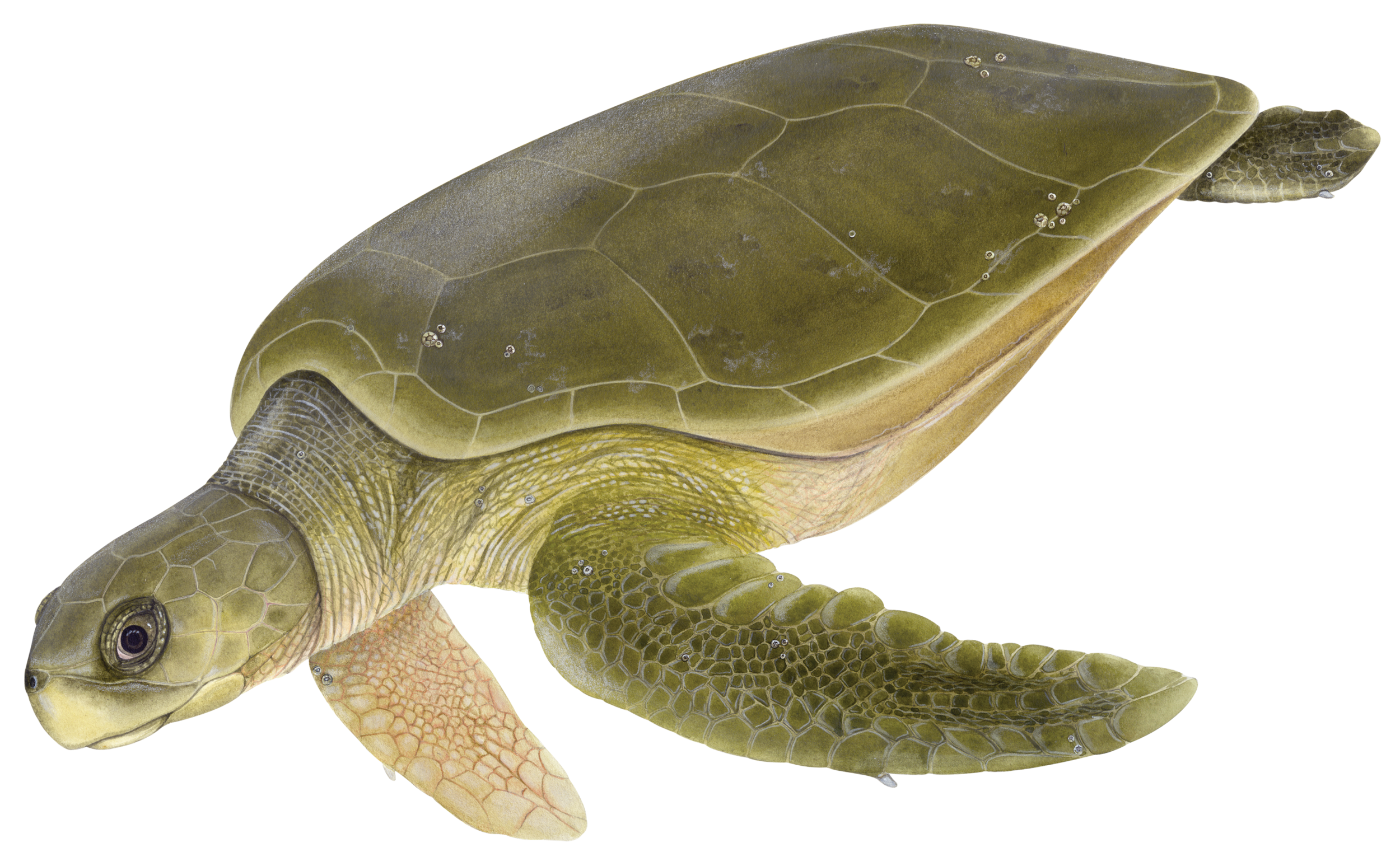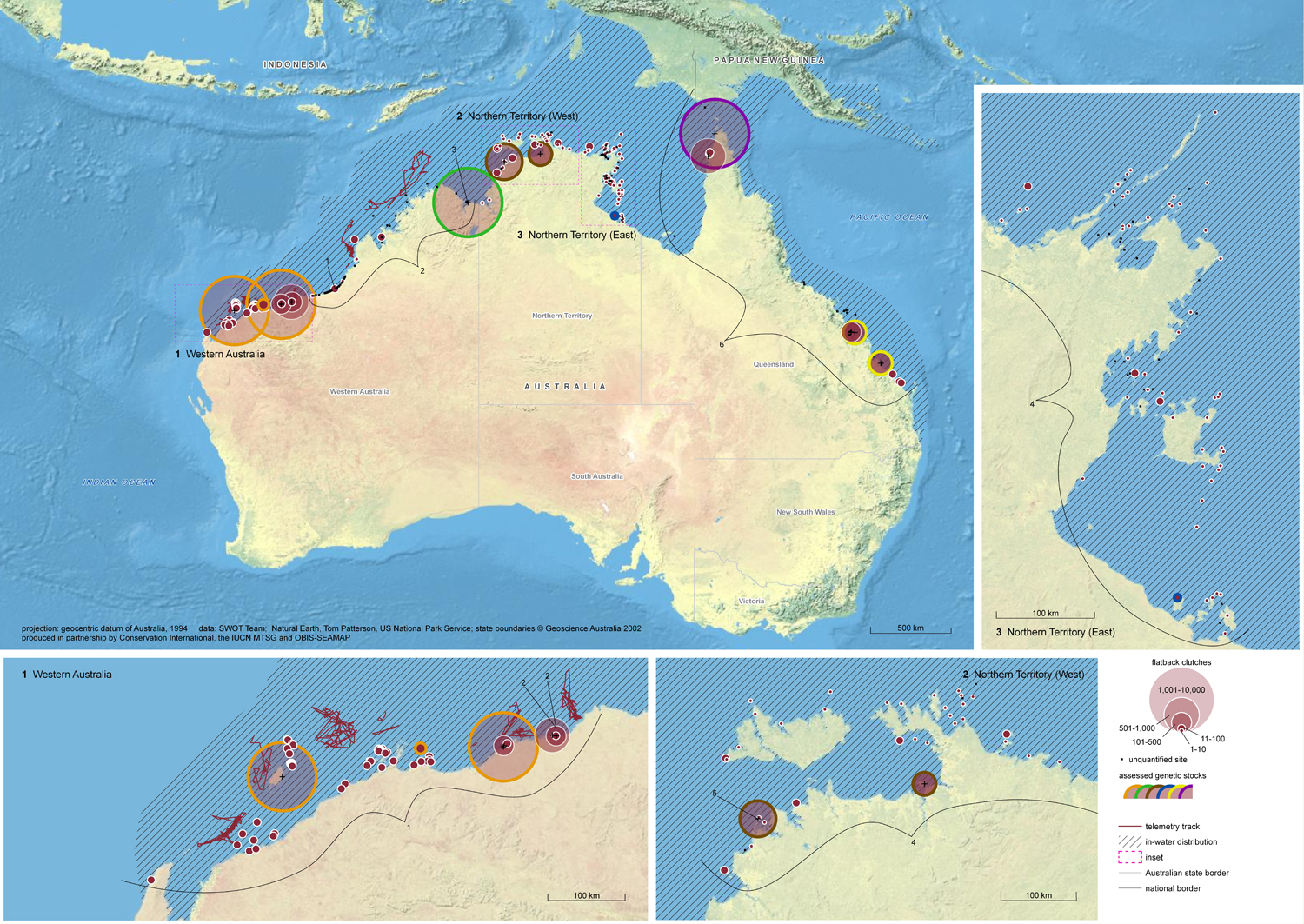Flatback Turtle
The flatback turtle is the least studied of the sea turtles and has one of the smallest geographic ranges. The only endemic sea turtle species, flatbacks nest solely along the northern coast of Australia, and live solely on the continental shelf between Australia, southern Indonesia, and Papua New Guinea.




Flatback Turtle SCIENTIFIC NAME
Natator depressus
How endangered are flatback sea turtles?
Data Deficient (Conservation Status Unknown)
flatback turtle DISTRIBUTION and maps
Flatback sea turtles nest only on the northern coast of Australia and all of the life stages of the flatback are spent on the continental shelf north of the Australian continent.
This map appears in SWOT Report, vol. IV, 2009
Size of flatback sea turtles
Adult flatback sea turtles measure 80-95 cm in length and weight up to 100 kg
Flatback hatchlings measure approximately 45 mm long and weigh about 40 g
Flatback sea turtle Diet
For all life stages, flatbacks eat mostly benthic invertebrates (crabs, other crustaceans, and mollusks) and sometimes jellies.
Flatback Reproduction
Flatbacks reach sexual maturity after approximately 15-20 years and return to reproduce every 2 to 4 years.
During a nesting season, flatbacks lay 2-3 clutches of 50-70 eggs each. The eggs are the size of billiard balls and weigh approximately 70-80 g each and take about 60 days to incubate and hatch.
Facts about Flatbacks
For a long time, flatbacks were thought to be a type of green turtle, but were finally described as a separate species in 1988
Flatbacks have the largest eggs and hatchlings relative to their adult body size of all sea turtles
Flatbacks have a unique physiology that allows them to stay active underwater for longer periods than most other species
Over much of their nesting range they are predated upon by saltwater crocodiles, which have also been know to attack human beings. Because of this, there are virtually no underwater photos of adults taken in the wild.
